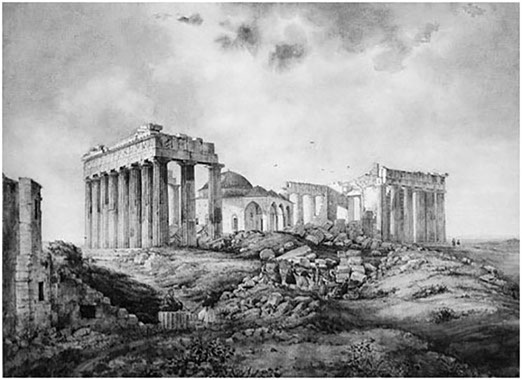Religious Architecture in Athens: Conclusion
What also becomes evident is the political dimension of religion; the Parthenon is the strongest example for this. Already in the Classical Period its dominating position over the city made it the city's symbol par excellence; by re-appropriating it into the most important religious building of the current elite, they reaffirmed their dominance over the city.
In Athens, we see shifts from ancient temples, to churches and then to mosques, and we can observe how older architecture influenced its successors. Today, Athens is a diverse mix of both ancient and modern religious architecture, reflecting its diverse history and culture.
NEXT
BACK
HOME
As has become clear in this short overview of the religious architecture that can be found at the Athenian Agora, the city underwent many changes over time. For those changes which are religious in nature, it may be possible to track the developments by looking at the different types of architecture used by different religious groups, and track these through time.
The cohesion between the relatively few known historical events and their impact on the development of religious buildings in Athens is very striking. The amount, types and 'splendor' of religious buildings has a direct correlation with the spatial, cultural and economical changes the city went through.

A mosque built inside the Parthenon. Because of its independence from the Classical structure the Turks were able to orientate it towards Mecca.
(https://www.utexas.edu/courses/introtogreece/lect20/img4parthmosque.html)